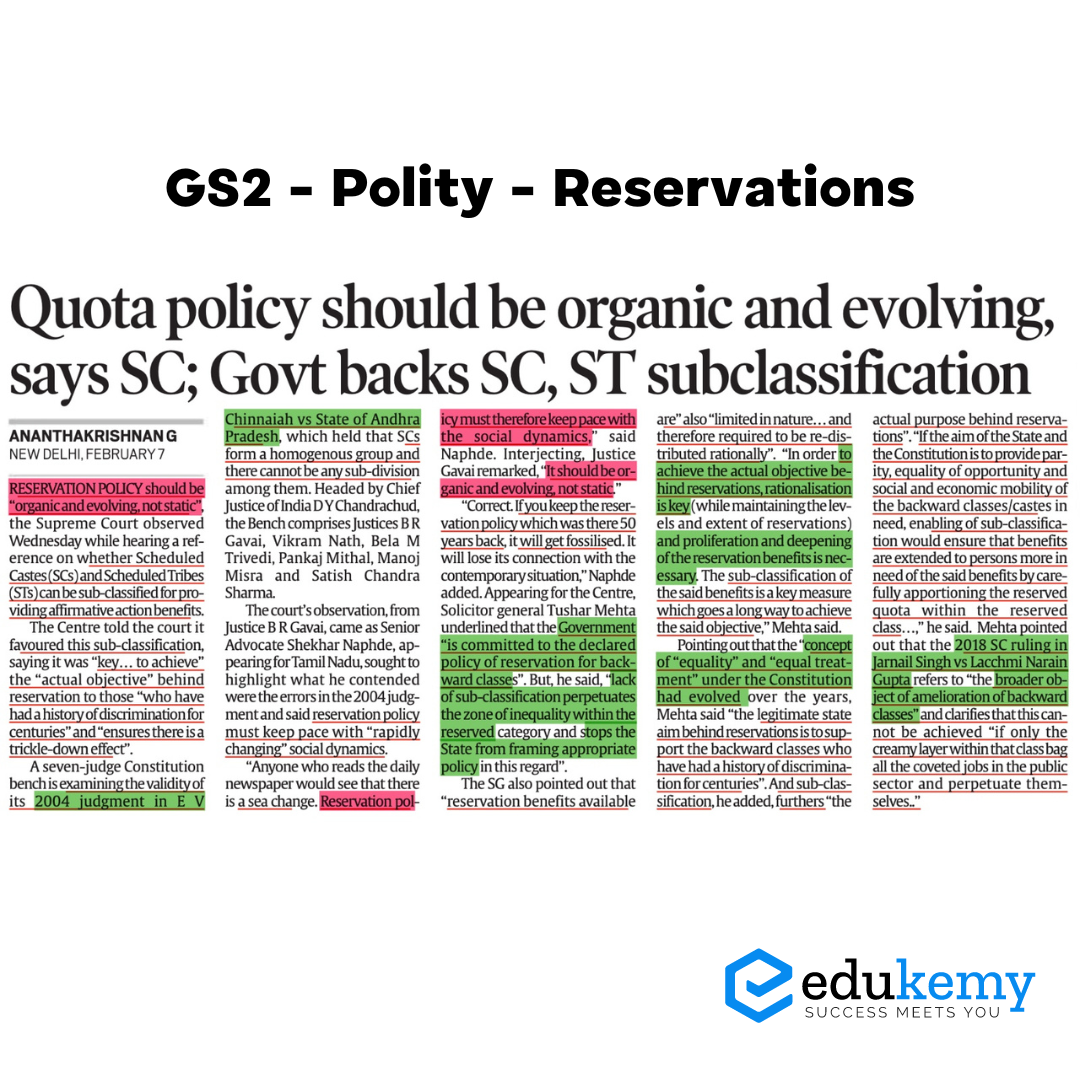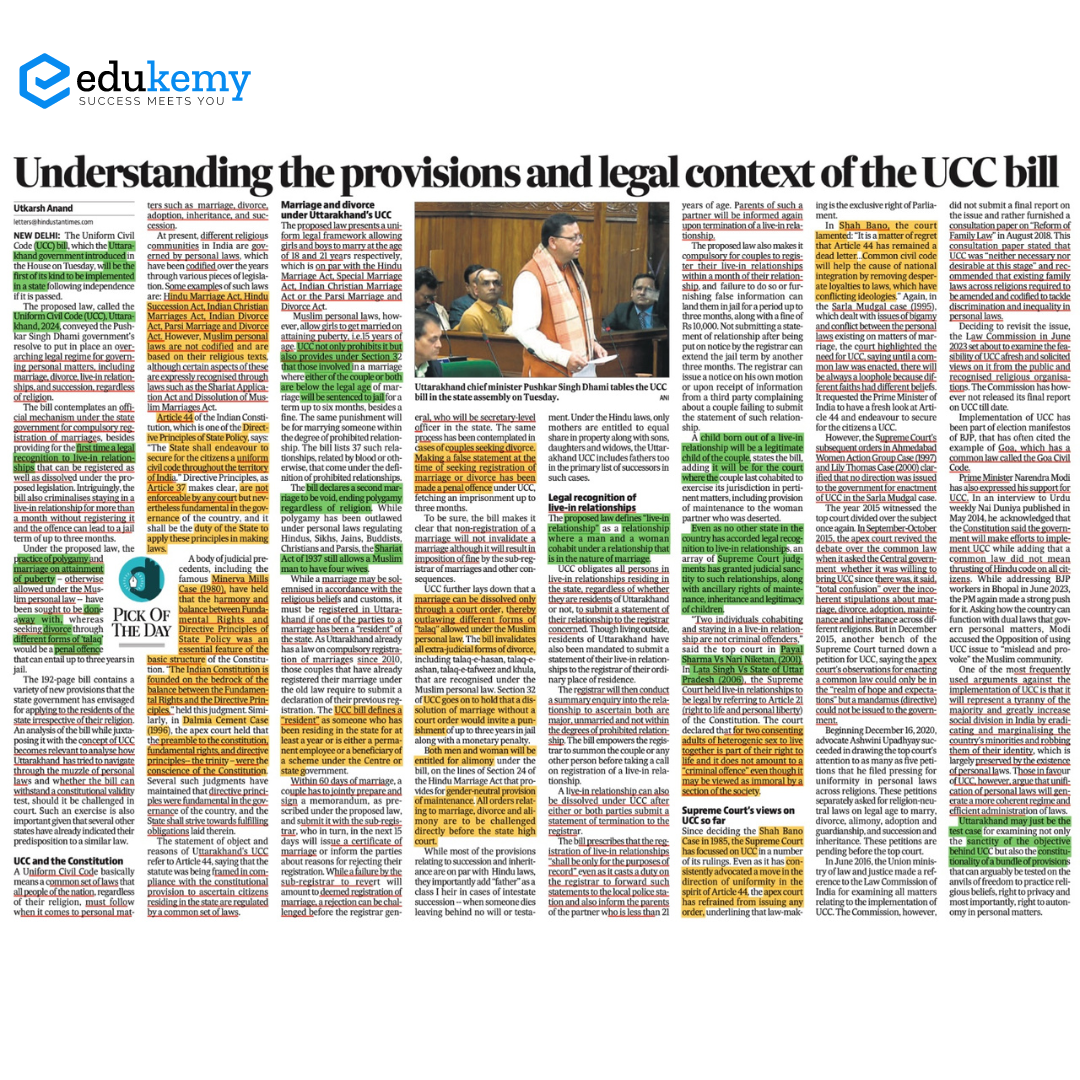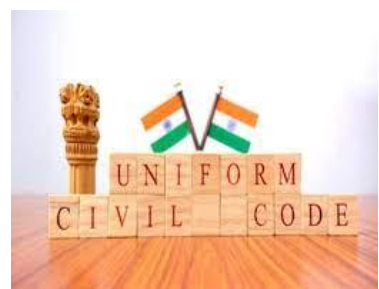Friday, 9th February 2024
Kilkari Programme
In News: The Ministers of State for Health and Family Welfare virtually inaugurated the Kilkari program, an m-health initiative delivering local content to beneficiaries in Gujarat and Maharashtra.
Kilkari Programme: Enhancing Maternal and Child Health Through Mobile Technology
- Overview
- Name: 'Kilkari,' meaning 'a baby’s gurgle.'
- Type: Centralized Interactive Voice Response (IVR) based mobile health service.
- Features
- Content Delivery
- Delivers 72 audio messages weekly to families' mobile phones.
- Messages cover topics related to pregnancy, childbirth, and childcare.
- Service initiates from the second trimester of pregnancy until the child turns one year old.
- Target Audience
- Women registered in the Reproductive Child Health (RCH) portal based on LMP or DoB.
- Messages provided to pregnant women and mothers with children under one year.
- Voice Character
- Audio messages presented in the voice of a fictitious doctor character named Dr. Anita.
- Centralized Hosting
- Hosted centrally by the Ministry of Health and Family Welfare (MoHFW) for all States/UTs.
- No additional investment required from States/UTs for technology or operational costs.
- Integration with RCH Portal
- Integrated with the centralized Reproductive Child Health (RCH) portal of MoHFW.
- Serves as the single source of information for this mHealth service.
- Cost-Free Service
- The program is provided free of cost for both States/UTs and beneficiaries.
- Current Implementation
- Implemented in 18 States/UTs across India.
- Content Delivery
Source: PIB
Maa Kamakhya Divya Pariyojana
In News: The Indian Prime Minister recently inaugurated the Maa Kamakhya Divya Pariyojana (Maa Kamakhya Access Corridor) by laying its foundation stone.
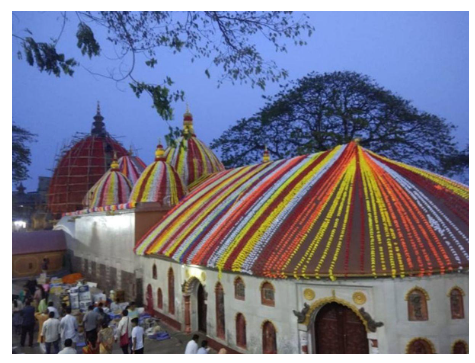
Maa Kamakhya Divya Pariyojana: Prime Minister’s Development Initiative for North Eastern Region (PM-DevINE)
- Background
- Sanctioned under the PM-DevINE scheme.
- Located on the Nilachal hills in Guwahati, Assam.
- Kamakhya temple stands as a significant pilgrimage center dedicated to various forms of Mother Shakti.
- Significance of Kamakhya Temple
- Dedicated to Mother Shakti in forms like Sundari, Tripura, Tara, Bhuvaneshvari, Bagalamukhi, and Chinnamasta.
- Hosts the Ambubachi Mela, a major annual festival.
- Ambubachi Mela
- Commemorates the yearly menstruation of Goddess Kamakhya.
- Held at the Kamakhya temple in Guwahati, Assam.
- A significant event drawing devotees and pilgrims from various regions.
Source: PIB
Daily News Paper Snippets - 09th February 2024


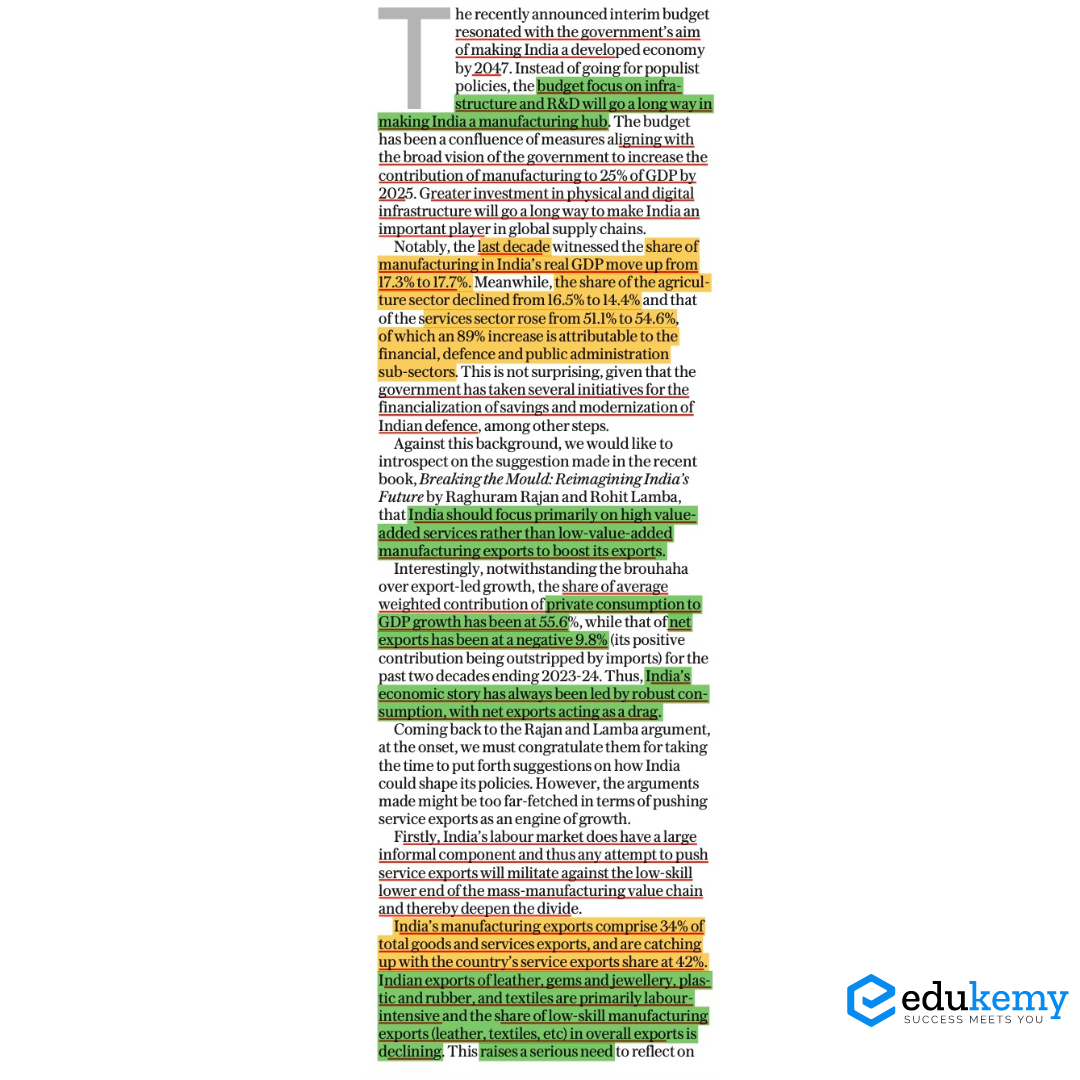
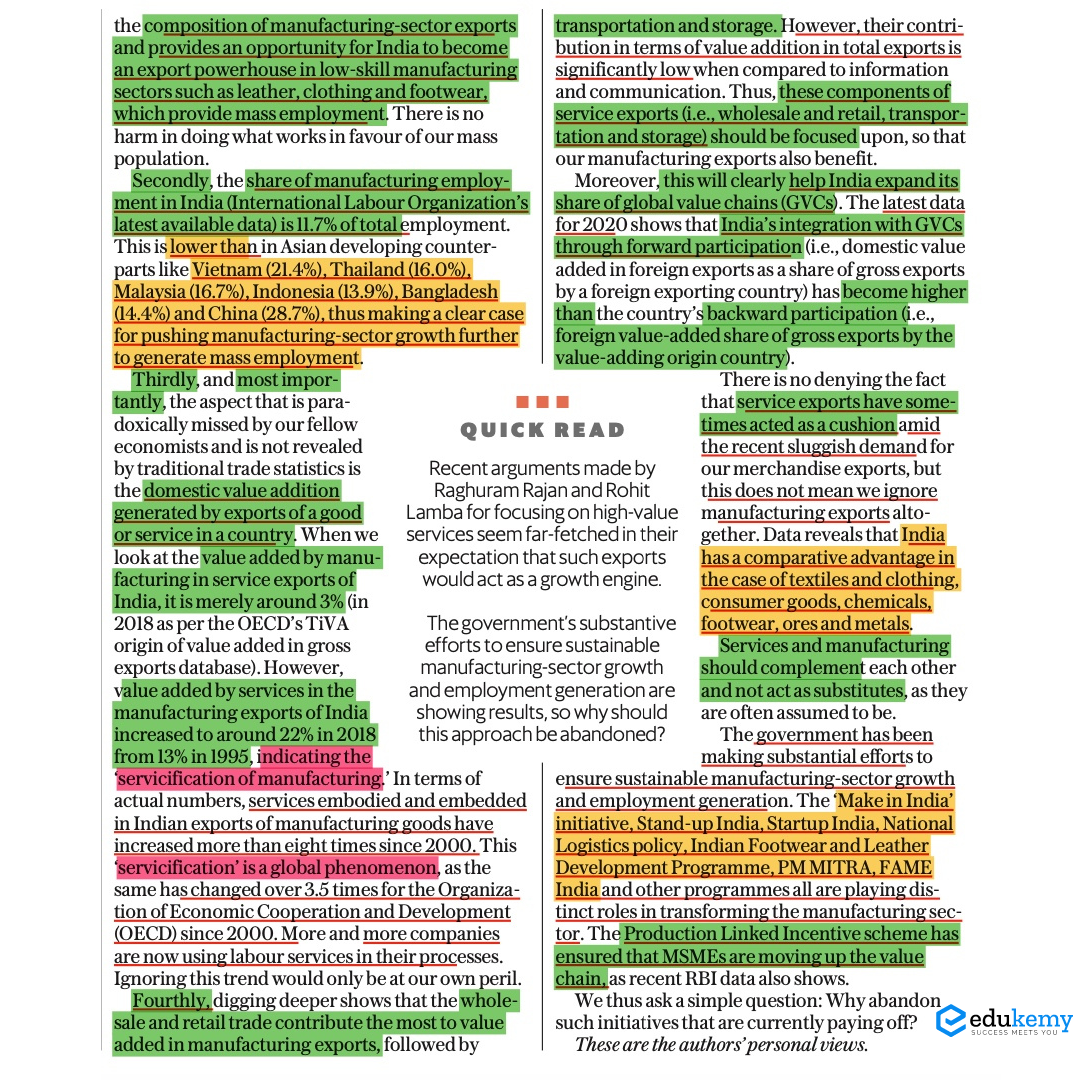
Diamond Jubilee of the Supreme Court
In News: The Supreme Court of India (SC) recently marked its Diamond Jubilee Celebration (75th anniversary) at the Supreme Court Auditorium in Delhi, coinciding with the 75th anniversary of the Indian Constitution.
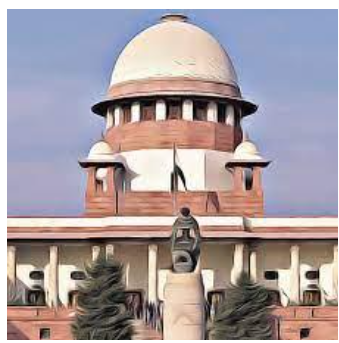
Major Highlights of the Event: Embracing Digital Transformation
- Digital Initiatives
- Launch of digital initiatives, including Digital Supreme Court Reports (Digi SCR) and Digital Courts 2.0.
- Revamped Supreme Court website introduced to enhance accessibility and user experience.
- Digital Supreme Court Reports (Digi SCR)
- Aims to provide free, electronic access to Supreme Court judgments since 1950.
- Fosters transparency and accessibility in legal information.
- Digital Courts 2.0
- Leverages AI for real-time transcription of court proceedings.
- Represents a significant advancement in efficient record-keeping and judicial processes.
- Revamped Supreme Court Website
- Bilingual format (English and Hindi) for a user-friendly interface.
- Seamless access to judicial information, emphasizing transparency.
- Efforts for Enhanced Accessibility to Justice
- Focus on expanding the reach of the Supreme Court, especially in remote areas.
- Investments in physical infrastructure, such as the expansion of the Supreme Court Building Complex.
Key Points Related to the Supreme Court: Understanding its Structure and Functioning
- Establishment
- Inaugurated on January 28, 1950, two days after India became a Sovereign Democratic Republic.
- Successor to the Federal Court of India, established under the Government of India Act of 1935.
- Constitutional Provisions
- Articles 124 to 147 in Part V of the Constitution govern the organization, independence, jurisdiction, powers, and procedures of the Supreme Court.
- Parliament authorized to regulate these provisions.
- Current Composition
- Consists of 34 judges, including the Chief Justice of India.
- Original Constitution envisioned a Chief Justice and 7 puisne Judges, subject to increase by Parliament.
- Appointment
- President appoints the Chief Justice after consulting select judges from the Supreme Court and High Courts.
- Other judges appointed by the President after consulting with the Chief Justice and additional judges.
- Eligibility Criteria for Appointment
- Must be an Indian citizen.
- Should have served as a High Court Judge for at least five years consecutively or practiced as a High Court Advocate for at least ten years consecutively.
- Removal of Judges
- Removal possible through an order of the President, following an address by Parliament on grounds of proven misbehavior or incapacity.
- Independence of Supreme Court
- Fixed service conditions determined by Parliament, ensuring stability in judges' salaries, allowances, and benefits.
- Conduct immunity prevents discussion of judges' conduct, except during impeachment proceedings.
- Significance of the Supreme Court
- Guardian of the Constitution, safeguarding its supremacy and protecting fundamental rights.
- Upholds the rule of law, acting as the final arbiter of legal disputes through the power of Judicial Review.
- Promotes social justice, protects marginalized communities, and upholds human rights.
Major Issues Related to the Supreme Court: Addressing Challenges
- Pendency of Cases
- Continual challenge despite efforts to increase efficiency.
- Volume of cases strains the court's resources.
- Judicial Activism vs. Judicial Restraint
- Ongoing debate on the appropriate role of the judiciary.
- Discussions on whether the Supreme Court should be more proactive or exercise restraint.
- Concerns of Appointment of Judges
- Collegium system and transparency in judicial appointments are contentious.
- Proposals for reforms, such as the National Judicial Appointment Commission.
- Technology and Access to Justice
- Implementation of e-filing and virtual hearings to improve access.
- Challenges in ensuring equitable access, especially for marginalized communities.
- Inadequate Women Representation in SC
- Current representation imbalance with only three female judges.
- Reflects the need for improved gender diversity in the legal system.
Way Forward: Proposals for Reform and Improvement
- Splitting the Supreme Court
- Proposal for a Constitutional Division and a Legal Division.
- Aims to enhance access to justice and reduce litigants' fees.
- Enhanced Judicial Sitting
- Proposals to increase the Supreme Court's working days and reduce vacation time.
- Intended to address the backlog of pending cases.
- Revisiting the Establishment of NJAC
- Suggested amendments to incorporate safeguards and ensure constitutionality.
- Focus on maintaining majority control with the judiciary.
- Enhancing Gender Diversity in the Judiciary
- Proposal for a fixed percentage of female judges.
- Upcoming appointment of Justice B.V. Nagarathna as the first female Chief Justice of India as a positive step towards gender parity.
|
UPSC Previous Year Questions Prelims (2021) Q. With reference to the Indian judiciary, consider the following statements:
Which of the statements given above is/are correct? (a) 1 only Ans: (c) Q. What was the exact constitutional status of India on 26th January, 1950? (a) A Democratic Republic Ans: (b) Mains (2017) Q. Critically examine the Supreme Court’s judgement on ‘National Judicial Appointments Commission Act, 2014’ with reference to the appointment of judges of higher judiciary in India. |
Source: PIB
Sub-categorisation within Castes
In News: A seven-judge Constitutional bench is currently assessing the legitimacy of its 2004 ruling in the case of E V Chinnaiah vs State of Andhra Pradesh.
Legality of Sub-categorisation within Castes: Legal Developments
- Background
- States like Punjab, Bihar, and Tamil Nadu attempted State-level reservation laws for sub-categorisation of SCs.
- Legal challenges emerged, leading to the formation of a larger Constitution Bench by the Supreme Court.
- E. V. Chinnaiah v State of Andhra Pradesh (2004)
- Apex court held that communities in the Presidential List for Scheduled Castes form a single larger class for reservation.
- State lacked legislative power for sub-classifications, violating the Right to Equality.
- Lists can only be made by Parliament and notified by the President.
- Davinder Singh Case (2020)
- A five-member Supreme Court bench ruled sub-categorisation constitutionally valid.
- Urged a larger constitutional bench to decide the matter.
- Matter Referred to Seven-judge Bench
- A seven-judge Constitution bench reevaluating the validity of the 2004 judgment in E V Chinnaiah vs State of Andhra Pradesh.
- Examining sub-classification within SCs and STs, akin to OBCs.
- Assessing the competence of state assemblies to enact laws for sub-categorisation.
Steps taken by the Union Government on Sub-classification Issue
- Earlier Steps (2005)
- Union government considered legal options for sub-categorisation.
- Attorney General opined it possible with unimpeachable evidence.
- NCSC and NCST argued no constitutional amendment needed, citing Article 16(4).
- Emphasized the need for prioritizing existing schemes for under-represented backward classes.
- Recent Step (January 2024)
- Union government forms a five-member committee of Secretaries chaired by the Cabinet Secretary.
- Committee tasked with assessing a fair distribution of benefits among the 1,200 Scheduled Castes.
- Focus on benefits, programs, and initiatives for the most disadvantaged communities.
Backs SC, ST Subclassification
- Centre's Stand Before Constitution Bench
- Centre supports earmarking most backward categories within SC/STs for state policies on subclassification.
- Highlights flaws in the 2004 judgment, claiming it disempowered states from framing appropriate policies.
- Emphasizes the dual-level concept of equality within backward classes.
- States that reservation benefits are limited, requiring rational redistribution for effective upliftment.
- Observations by the Apex Court
- Reservation policy should be organic, evolving, not static.
- Stresses the need for policy alignment with contemporary social dynamics.
- Recognizes the evolving nature of social situations and the necessity for dynamic reservation policies.
Source: SCO
Delimitation - Edukemy Current Affairs
In News: The delimitation of constituencies for the Lok Sabha and State Legislative Assemblies is scheduled to take place following the First Census conducted after the year 2026.
Delimitation: Understanding the Process
- Definition and Process
- Delimitation is the process of defining the number of seats and boundaries of territorial constituencies in each State for the Lok Sabha and Legislative assemblies.
- It involves determining the reserved seats for Scheduled Castes (SC) and Scheduled Tribes (ST) and is carried out by the Delimitation Commission established under an act of Parliament.
- Historical Overview
- Delimitation Commissions have been set up in 1952, 1963, 1973, and 2002, each time under specific acts of 1952, 1962, 1972, and 2002.
- The first delimitation exercise was conducted by the President with the assistance of the Election Commission in 1950-51.
- Constitutional Provisions
- Article 82 mandates the enactment of a Delimitation Act by Parliament after every Census.
- Article 170 ensures States are divided into territorial constituencies as per the Delimitation Act after every Census.
Significance of Delimitation: Key Aspects
- Representation
- Delimitation ensures fair representation in the Lok Sabha and State Legislative Assemblies based on population changes.
- Upholds the democratic principle of "one citizen-one vote-one value."
- Equity
- Adjusts boundaries to achieve equitable distribution of seats among regions, considering population shifts over time.
- Prevents underrepresentation or overrepresentation of specific areas.
- Reserved Seats for SC/ST
- Determines allocation of reserved seats for SC and ST, ensuring political representation for marginalized communities.
- Federalism
- Influences the distribution of political power among states, balancing population-based representation and federal considerations.
- Population Control Measures
- Raises questions about the effectiveness and implications of freezing seats based on the 1971 Census, especially in the context of changing demographics.
Concerns Related to Delimitation: Addressing Challenges
- Regional Disparity
- Disparity in representation between northern and southern parts of India due to population-centric delimitation.
- Highlights the need to consider progress made by southern states in population control.
- Inadequate Funding
- Raises concerns about southern states losing funding and representation after the 15th Finance Commission used the 2011 Census as a basis.
- Impact on Reservations
- Scheduled delimitation may result in a shift of power towards the north, affecting reservations for SCs/STs.
International Practices in Delimitation: Lessons from Abroad
- In the US
- The House of Representatives has capped the number of seats since 1913, redistributed among states after each Census through the method of equal proportion.
- In the EU
- The EU Parliament uses degressive proportionality, where the ratio of population to seats increases with population growth.
Way Forward: Striking a Balance
- Balancing democratic representation with federal considerations is crucial.
- Suggestions include capping Lok Sabha seats while increasing MLAs based on population and empowering local bodies for grassroots democracy.
|
UPSC Previous Year Questions Prelims (2012) Q. With reference to the Delimitation Commission consider the following statements:
Which of the statements given above is/are correct? (a) 1 only Ans: (c) |
Source: TH
Constitution (J&K) ST Order (Amendment) Bill, 2024
In News: The Lok Sabha recently approved the Constitution (Jammu and Kashmir) Scheduled Tribes Order (Amendment) Bill, 2024, with the objective of incorporating distinct ethnic groups and tribes from Jammu and Kashmir into the Scheduled Tribes list.
Constitution (Jammu and Kashmir) Scheduled Tribes Order (Amendment) Bill, 2024: Inclusive Development in Jammu and Kashmir
- About
- The bill focuses on including four ethnic groups in the list of Scheduled Tribes (STs) in Jammu and Kashmir.
- Targeted ethnic groups: Gadda Brahmin, Koli, Paddari Tribe, and Pahari Ethnic Group.
- Aims to ensure socio-economic and political empowerment of these communities.
- Significance
- Ensures existing reservations for communities like Gujjars and Bakarwals remain unaffected.
- Provides new reservations for the newly listed STs.
- Acknowledged as a significant step towards inclusive development in Jammu and Kashmir.
Jammu and Kashmir Local Bodies Laws (Amendment) Bill, 2024: Empowering OBCs in Local Bodies
- Key Features
- Amendment of provisions in the J&K Panchayati Raj Act, 1989, J&K Municipal Act, 2000, and J&K Municipal Corporation Act, 2000.
- Aimed at providing reservations to OBCs in Local Bodies (panchayats and municipalities) in the Union Territory.
- Alignment with Constitutional provisions related to Panchayats and Municipalities, ensuring consistency.
- Alignment with Constitutional Provisions
- Seeks consistency with Part IX and Part IXA of the Constitution, pertaining to Panchayats and Municipalities.
- Introduces reservations for backward classes of citizens, as empowered by Constitutional clauses.
- Superintendence of Elections
- Addresses inconsistencies in the superintendence, direction, and control of electoral rolls and election conduct.
- Ensures alignment with Constitutional provisions, specifically Articles 243K and 243ZA.
- Removal of State Election Commissioner
- Rectifies variance in provisions regarding the removal of the State Election Commissioner.
- Aims to align the removal process with Constitutional provisions, mirroring the removal process for a Judge of a High Court.
Constitutional Provisions and Initiatives related to Tribes in India: Ensuring Tribal Rights and Welfare
- Constitutional Provisions
- Definition of Scheduled Tribes in Article 366(25), empowering the President to specify tribes or tribal communities.
- The Fifth Schedule for Administration and Control of Scheduled Areas and Tribes in specified states.
- The Sixth Schedule for administration of tribal areas in Assam, Meghalaya, Tripura, and Mizoram.
- Legal Provisions
- Scheduled Castes and Scheduled Tribes (Prevention of Atrocities) Act, 1989.
- Panchayats (Extension to the Scheduled Areas) Act, 1996.
- Scheduled Tribes and Other Traditional Forest Dwellers (Recognition of Forest Rights) Act, 2006.
- Protection of Civil Rights Act, 1955.
- Related Initiatives
- TRIFED.
- Digital Transformation of Tribal Schools.
- Development of Particularly Vulnerable Tribal Groups (PVTGs).
- Pradhan Mantri Van Dhan Yojana.
- Related Committees
- Xaxa Committee (2013).
- Bhuria Commission (2002-2004) recommending the recognition of more tribal communities as ST.
- Lokur Committee (1965) focusing on safeguarding tribal land rights and improving access to education, healthcare, and employment for ST communities.
|
UPSC Previous Year Questions Prelims (2022) Q. If a particular area is brought under the Fifth Schedule of the Constitution of India, which one of the following statements best reflects the consequence of it? (a) This would prevent the transfer of land of tribal people to non-tribal people. (b) This would create a local self-governing body in that area. (c) This would convert that area into a Union Territory. (d) The State having such areas would be declared a Special Category State. Ans: (a) Prelims (2019) Q. Under which Schedule of the Constitution of India can the transfer of tribal land to private parties for mining be declared null and void? (2019) (a) Third Schedule Ans: (b) Mains (2017) Q. What are the two major legal initiatives by the State since Independence addressing discrimination against Scheduled Tribes (STs)? |
Source: PIB
Blue Economy 2.0
In News: In the recent presentation of the Interim Budget, notable emphasis was placed on propelling Blue Economy 2.0.

Blue Economy: Utilizing Marine Resources Sustainably
- Definition
- The blue economy involves the sustainable utilization of marine resources, promoting economic growth, improved livelihoods, and efficient transport.
- Emphasizes preserving the health of marine and coastal ecosystems.
- In India
- Encompasses various sectors: shipping, tourism, fisheries, and offshore oil and gas exploration.
- Aligned with Sustainable Development Goal 14 (SDG 14), advocating for the conservation and sustainable use of oceans, seas, and marine resources.
- Necessity for Blue Economy
- India boasts a vast coastline of 7500 km and exclusive economic zones (EEZ) spanning 2.2 million square km.
- Home to 12 major ports, over 200 other ports, 30 shipyards, and diverse maritime service providers.
- Advocates greening ocean development for enhanced productivity and conservation.
- Global Significance
- Oceans cover 75% of Earth’s surface, contain 97% of Earth’s water, and constitute 99% of the planet's living area.
- Global ocean economy valued at approximately USD 1.5 trillion annually, ranking as the world's seventh-largest economy.
- Projected to double by 2030, reaching USD 3 trillion.
- Estimated total value of ocean assets (natural capital): USD 24 trillion.
Blue Economy 2.0: Advancing Climate-Resilient Coastal Development
- Overview
- Aims to promote climate-resilient activities and sustainable development in coastal areas.
- Responds to unprecedented threats faced by marine ecosystems, including climate change, pollution, and overexploitation.
- Key Components
- Restoration and Adaptation
- Focus on restoring degraded coastal ecosystems.
- Implementation of adaptation strategies to mitigate rising sea levels and extreme weather events.
- Crucial for preserving biodiversity, protecting coastal communities, and maintaining ecosystem services.
- Expansion of Coastal Aquaculture and Mariculture
- Concentrates on expanding coastal aquaculture and mariculture.
- Addresses the growing demand for seafood while reducing pressure on wild fish stocks.
- Promotes sustainable aquaculture practices and integrates them with tourism and renewable energy.
- Integrated and Multi-Sectoral Approach
- Recognizes the interconnectedness of various sectors.
- Advocates coordinated action across government departments, industries, and civil society.
- Fosters collaboration and partnerships for achieving sustainable development goals in coastal areas.
- Restoration and Adaptation
Government Initiatives Related to Blue Economy
- Deep Ocean Mission
- Sagarmala Project
- O-SMART (Ocean Services, Modelling, Application, Resources, and Technology)
- Integrated Coastal Zone Management
- NavIC (Navigation with Indian Constellation)
- India-Norway Task Force on Blue Economy for Sustainable Development
- National Fisheries Policy
|
UPSC Previous Year Questions Prelims (2019) Q. What is blue carbon? (a) Carbon captured by oceans and coastal ecosystems Ans: (a) Mains (2018) Q. Defining blue revolution, explain the problems and strategies for pisciculture development in India. |
Source: DTE
Ajanta and Ellora caves
In News: Recently, the Ministry of Tourism incorporated the UNESCO World Heritage sites of Ajanta and Ellora caves in Chhatrapati Sambhajinagar under its Swadesh Darshan Scheme II.

About Ajanta and Ellora Caves
- Located near Aurangabad in Maharashtra, Ajanta and Ellora caves are renowned examples of ancient rock-cut caves.
- The complex boasts exquisite sculptures, paintings, and frescoes, housing Buddhist monasteries, Hindu, and Jain temples.
- Ajanta comprises 29 caves constructed between the 2nd century BC and the 6th century AD, while Ellora encompasses 34 caves dating from the 6th to the 11th centuries AD.
- Ajanta Caves predominantly served as Buddhist retreats, featuring meditation cells, assembly halls, and stupas.
- Ellora exhibits a diverse mix of Hindu, Jain, and Buddhist structures, adorned with sculptures reflecting spiritual beliefs of the era.
- The Kailash Temple in Ellora, a monumental monolithic structure carved from a single rock, is a marvel that took 18 years to complete.
- Designated as UNESCO World Heritage Sites, these caves showcase rich cultural and religious diversity.
Key Facts about Swadesh Darshan Scheme
- Launched in 2015 by the Ministry of Tourism, Government of India, the Swadesh Darshan Scheme aims to develop sustainable and responsible tourism destinations.
- As a 100% centrally funded scheme, it provides financial assistance for tourism infrastructure development to state governments, Union Territory Administrations, or Central Agencies.
- Operation and Maintenance (O&M) responsibilities for projects sanctioned under the Swadesh Darshan Scheme lie with the respective State Government/UT Administration.
Swadesh Darshan 2.0
- Revamped as Swadesh Darshan 2.0 (SD2.0), the scheme focuses on sustainable and responsible tourist destination development, covering infrastructure, services, human capital, management, and promotion.
- SD2.0 seeks to increase private sector investment in tourism and hospitality, fostering Public Private Partnerships (PPP) for tourism development and asset maintenance.
Source: TOI
Gas Flaring
In News: Recently gathered samples of natural gas flares from aircraft in various regions of the USA have shown significant variations in estimates of nitrogen oxide emissions.
About Gas Flaring
- Gas flaring involves the combustion of natural gas associated with oil extraction.
Reasons for Gas Flaring
- Flaring persists due to safety, even though it is wasteful and polluting, providing a relatively safe method to dispose of associated gas from oil production.
- Utilizing associated gas depends on economically viable markets, infrastructure, and financial incentives, often leading to flaring when these conditions are lacking.
- Companies may resort to flaring for safety reasons, managing pressure changes during crude oil extraction.
- Most flared gas, mainly associated gas, is similar to natural gas used globally but may require processing to remove contaminants.
- Associated gas can be used on-site for electricity generation, compressed or liquefied for transportation (CNG or LNG), or converted into liquid forms (synthetic oil, diesel, methanol, DME) using GTL technologies.
Environmental Impacts
- Flare combustion converts hydrocarbons to carbon dioxide and water, reducing climate impact and on-site safety concerns but producing nitrogen oxides (NOx).
- NOx, including nitric oxide and nitrogen dioxide, directly and indirectly affects air quality.
Reducing Gas Flaring
- Oil producers can re-inject associated gas or utilize it for productive purposes to minimize gas flaring.
Source: PO
MXenes
In News: Researchers have recently presented findings on the potential application of MXene coatings for guiding microwaves in space, offering a prospect to reduce the weight of satellite payloads.
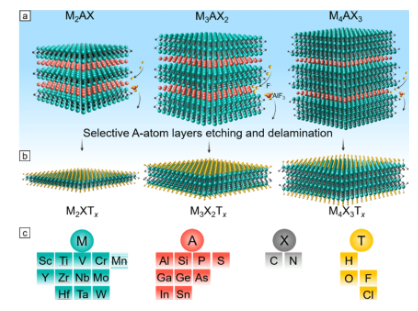
About MXenes
- Introduction
- Mxenes, initially discovered in 2011, belong to a substantial group of two-dimensional (2D) materials, constituting ceramics.
- They stand out among most 2D ceramics due to their inherent conductivity and outstanding volumetric capacitance, arising from their molecular sheets made of carbides and nitrides of transition metals like titanium.
- Composition and Origin
- Derived from a bulk crystal known as MAX, Mxenes have a general formula of Mn+1XnTx.
- In this formula, M represents an early transition metal, X denotes carbon and/or nitrogen, and T signifies a functional group on the MXene surface, typically O, OH, and F.
- Widespread Usage
- Titanium carbide (Ti3C2Tx) is the most commonly employed type of MXene among various variants.
- Applications
- Mxenes exhibit promise in various applications such as energy storage (e.g., lithium-ion batteries, supercapacitors) due to their high conductivity and extensive surface area.
- Other applications include electromagnetic interference shielding, catalysis, sensors, and water purification.
Transition Metals
- Definition
- Transition metals refer to a group of chemical elements characterized by valence electrons in two shells, allowing them to participate in the formation of chemical bonds.
- Position on the Periodic Table
- Occupying the middle sections of the periodic table between left-hand and right-hand groups, transition metals have distinctive properties.
- They have high melting points and densities, act as catalysts, and are efficient conductors of heat and electricity.
- Technological Importance
- Many transition metals, including titanium, iron, nickel, and copper, hold technological significance.
- Iron, being the most abundant transition metal in Earth's solid crust, plays a crucial role.
Source: PO
Rectifying Legal Inconsistencies Regarding Child Pornography
In News: A recent article delves into the consequences of the recent ruling by the Madras High Court in the matter of 'S. Harish vs Inspector of Police' and its diverse effects on various segments of the community.
What is the POCSO Act, 2012?
- About
- The POCSO Act originated from India's commitment to the UN Convention on the Rights of the Child in 1992.
- This special law aims to address sexual exploitation and abuse of children by defining and penalizing these offenses.
- The Act encompasses individuals below 18 years, providing punishments based on the gravity of the offense.
- In 2019, amendments were introduced, incorporating more stringent penalties, including the death penalty.
- The POCSO Rules, 2020, and Rule-9, allowing interim compensation, were also notified.
- The Act ensures gender-neutral protection and facilitates ease in reporting cases.
- Features
- Gender-Neutral Nature
- Acknowledges that both genders can be victims of sexual abuse.
- Upholds the principle of equal protection for all children.
- Ease in Reporting Cases
- Promotes reporting of sexual exploitation cases by individuals or institutions.
- Non-reporting is specifically penalized, making it challenging to conceal offenses.
- Explicit Definition of Terms
- Introduces a new offense for storing child pornography material.
- Defines 'sexual assault' explicitly, providing a clear legal framework.
- Immediate Payment of Special Relief
- Empowers the Child Welfare Committee (CWC) to recommend immediate payment for essential needs.
- Utilizes funds from District Legal Services Authority, District Child Protection Unit, or funds under the Juvenile Justice Act.
What are the Issues in the Recent Judgement of Madras High Court?
- Different Interpretation of Section 67B
- Madras HC's interpretation of Section 67B(b) raises concerns about the accused's actions.
- Failure to analyze the entire Section 67B impacts the clarity of the judgement.
- Incomplete Reference to Kerala HC’s Judgement
- Madras HC cites a precedent from Kerala HC without providing specific details.
- Reference to a case on the scope of Section 292 of IPC in the context of child pornography lacks relevance.
- Negligence of Constitutional Validity of Section 67B
- Lack of consideration for the constitutionality of Section 67B(b).
- Failure to challenge the vires of Section 67B(b) weakens the judgement.
- Excessive Reliance on Section 482 of CrPC
- Madras HC invokes Section 482 to prevent misuse of the court process.
- Overreliance on this section, without ensuring the allegations constitute an offense, raises concerns.
What Steps Need to Be Taken to Address the Issues?
- Adhering to Comprehensive Legislative Framework
- Emphasizes the adequacy of Section 67B of the IT Act in addressing offenses related to child pornography.
- Recognizes the comprehensive legislative structure in combating sexual exploitation in cyberspace.
- National Crime Records Bureau's Role
- Highlights the role of NCRB in prosecuting those uploading child sexual abuse materials.
- Stresses the need to safeguard privacy concerns of child victims.
- Terminology Adjustment
- Advocates for replacing "child pornography" with "child sexual abuse materials" (CSAM).
- Suggests that this linguistic shift will enhance legal clarity.
- Harmonising Legal Provisions
- Calls for aligning provisions between POCSO Act, 2012, and IT Act, 2000.
- Aims for consistency in addressing offenses related to child sexual exploitation.
- Making CSAM a Separate Offence
- Proposes amendments to include possession of CSAM as a distinct offense under the POCSO Act.
- Aligns the Act with the provisions of the IT Act.
- Importance of State Action
- Emphasizes the critical role of state governments in appealing against the Madras HC's decision.
- Stresses the necessity of upholding laws related to child protection for justice.
Conclusion
The Madras High Court's judgement prompts essential considerations regarding laws on child pornography. Addressing discrepancies between the POCSO Act, 2012, and the IT Act, 2000 requires legislative review to ensure coherence and effectiveness. The State government's appeal against the judgement and proactive measures are crucial for reinforcing legal safeguards and protecting children's rights in the digital era.
|
UPSC Previous Year Questions Prelims (2010) Q. With reference to the United Nations Convention on the Rights of the Child, consider the following:
Which of the above is/are the Rights of the child? (a) 1 only Ans: (d) Mains (2016) Q2. Examine the main provisions of the National Child Policy and throw light on the status of its implementation. |
Source: TH
"Bolo App in Damoh Schools: Elevating Education with Technology" - Case Study of the Day
Damoh District Administration launched the BOLO App by Google across Government Schools of the district.
- The App designed for primary grade children, is an innovative step towards ensuring improved learning outcomes.
- Bolo App helps to improve both English and Hindi reading skills, by encouraging kids to read aloud.
- Till now, this speech-based reading App has impacted more than 10,000 students in the district!

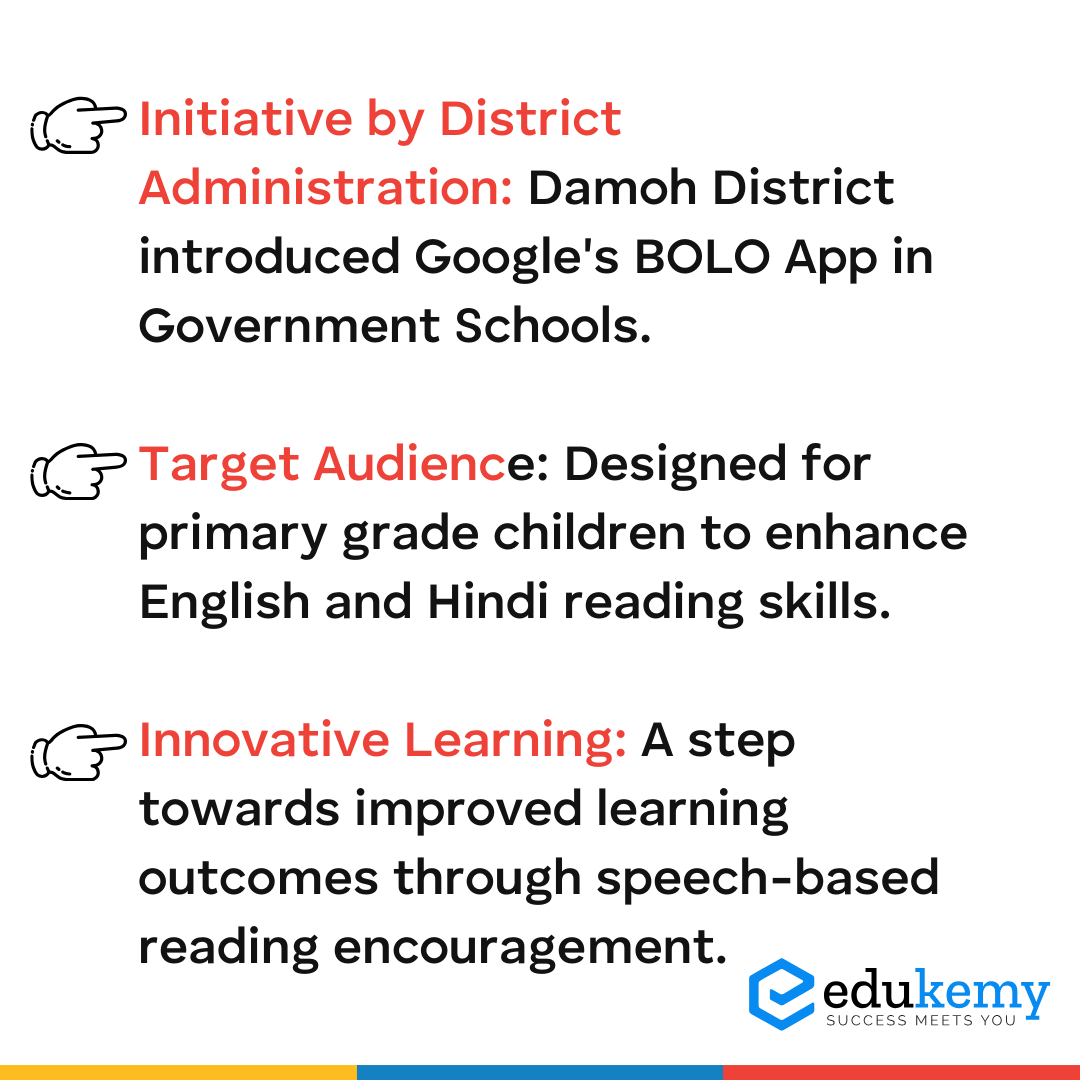
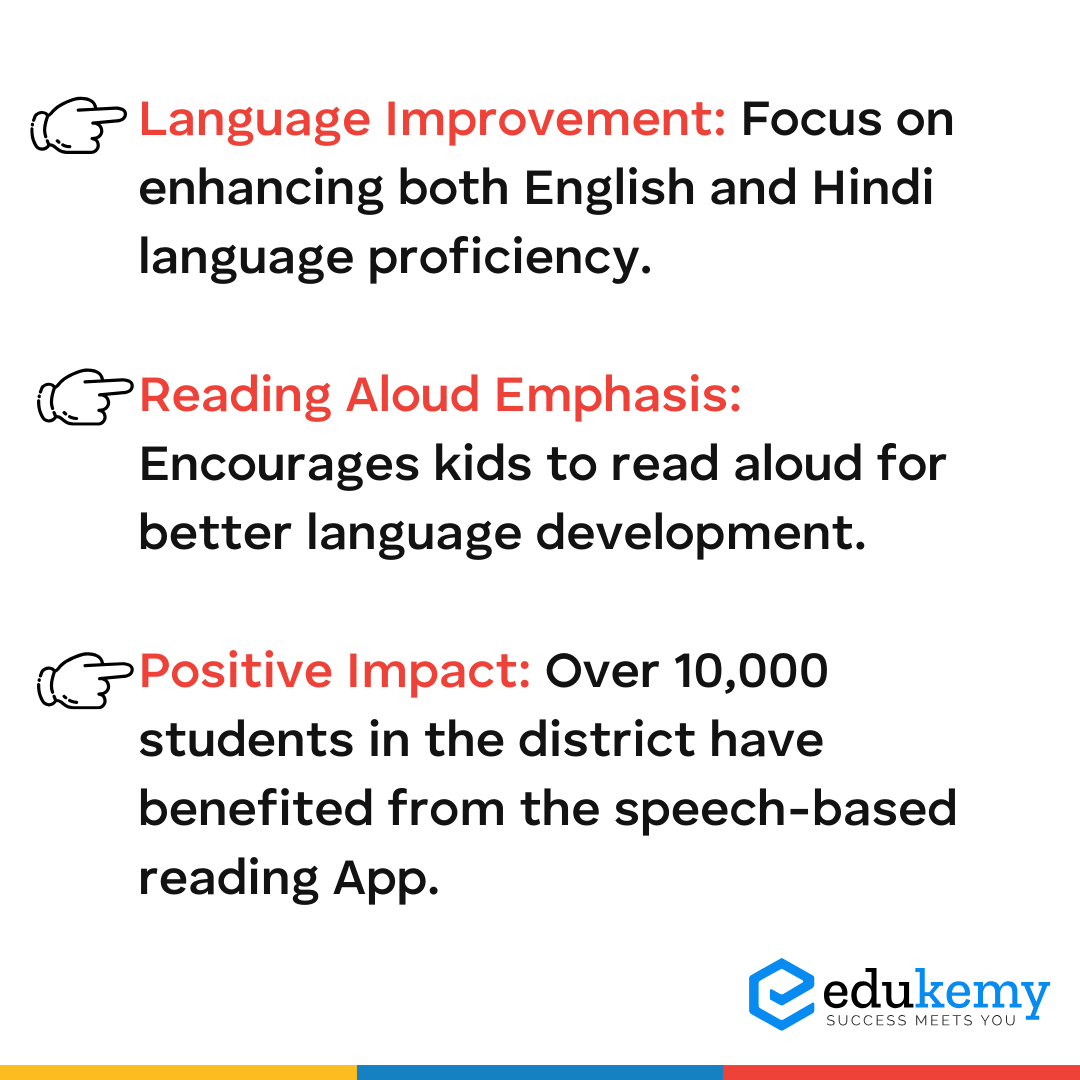
Share the article
Edukemy’s Current Affairs Quiz is published with multiple choice questions for UPSC exams
MCQ
Get Latest Updates on Offers, Event dates, and free Mentorship sessions.

Get in touch with our Expert Academic Counsellors 👋
FAQs
UPSC Daily Current Affairs focuses on learning current events on a daily basis. An aspirant needs to study regular and updated information about current events, news, and relevant topics that are important for UPSC aspirants. It covers national and international affairs, government policies, socio-economic issues, science and technology advancements, and more.
UPSC Daily Current Affairs provides aspirants with a concise and comprehensive overview of the latest happenings and developments across various fields. It helps aspirants stay updated with current affairs and provides them with valuable insights and analysis, which are essential for answering questions in the UPSC examinations. It enhances their knowledge, analytical skills, and ability to connect current affairs with the UPSC syllabus.
UPSC Daily Current Affairs covers a wide range of topics, including politics, economics, science and technology, environment, social issues, governance, international relations, and more. It offers news summaries, in-depth analyses, editorials, opinion pieces, and relevant study materials. It also provides practice questions and quizzes to help aspirants test their understanding of current affairs.
Edukemy's UPSC Daily Current Affairs can be accessed through:
- UPSC Daily Current Affairs can be accessed through Current Affairs tab at the top of the Main Page of Edukemy.
- Edukemy Mobile app: The Daily Current Affairs can also be access through Edukemy Mobile App.
- Social media: Follow Edukemy’s official social media accounts or pages that provide UPSC Daily Current Affairs updates, including Facebook, Twitter, or Telegram channels.

